This post is comprised of different sections
Take a look at our review of The Fountain!
Learn more about the book of Genesis and the Maya creation myth!
This post is comprised of different sections
Take a look at our review of The Fountain!
Learn more about the book of Genesis and the Maya creation myth!
Director: Darren Aronofsky
Producer: Arnon Milchan, Iain Smith, Eric Watson
Writer: Darren Aronofsky, Ari Handel
Starring: Hugh Jackman, Rachel Weisz
Year: 2006
Duration: 1h 33m
Country: USA
Language: English

Our rating

Your rating
Even before watching The Fountain, I was already sold on the exceptional directing qualities of Darren Aronofsky. I had watched Aronofsky’s two previous movies, Pi and Requiem for a dream, both of which I’d found fascinating (see our article on the movie Pi).
The Fountain, however, was on another level.
I watched The Fountain not too long after it came out of the cinema, so I didn’t have much experience with films of that sort. I was in awe from beginning to end.
My girlfriend, who wasn’t at all into these kind of weird, mind-bending movies was as impressed as I was. We couldn’t stop discussing it. What was that all about? What has just happened?
On the next day, I went to work and kept ruminating about the story, about the characters… Something clicked, something changed in my appreciation of cinema – something I had already experienced with Mulholland Drive, albeit differently. Isn’t that amazing? The power of entertainment, how it can shape and literally change your life?
I thought to myself, it is films like these that make me dream about creating my own fictional universe, a universe where I have free reign to devise its narrative. Were I to possess an inch of Aronofsky’s talent, these would be the kind of films I would devote myself to making.
I can’t contain it anymore! The Fountain is one of the best movies I have ever seen!!! (I guess there will be no surprise in the star rating 🙂 ).
The film is told in three separate but intermingled narratives happening at three different time-points: in the past (around the year 1500 A.D.), in the present (in the 21st century) and in the future (date is never mentioned, but probably in a very distant future).
In the present, neuroscientist Tom Creo (Hugh Jackman) is desperately trying to find a cure for cancer using botanical samples from a Guatemalan tree, so that he could help his dying wife Izzy Creo (Rachel Weisz) recover from a brain tumour.
Tom grows increasingly obsessed with finding a cure and spends little time with his wife, who, by now, has come to terms with her own mortality and accepted her fate.
In the past, Queen Isabel of Spain is being held captive by the Inquisition. She recruits Spanish Conquistador Tomás Verde and orders him to travel to South America, to find the Tree of Life, allegedly hidden inside a Mayan pyramid. The Queen believes the powers of the tree will free Spain and herself from the threat of the Inquisition.
In the future, cosmonaut Tommy travels in his spaceship towards a nebula wherein he believes resides Xibalba, the Mayan underworld. He is traveling with a tree, the bark of which he eats to allow him to live forever. The tree appears to react to Tommy’s voice and touch and we are led to believe the tree is Izzi herself.
The storyline alternates among these three narratives, and at no point in the movie it is made explicit whether the past and/or future timelines are actually real or not. One thing is clear though – they are all connected somehow to the present-day characters of Tom and Izzi.
What a formidable movie!
To me, it has all the characteristics I believe a cinematographic masterpiece should possess. Well-written, well-researched and engaging story; it has action, drama, mystery, thriller, romance; excellent acting, great dialogues, awesome soundtrack and amazing photography…
Aronofsky thought of everything. And to add the cherry on top of the cake, he included just the right amount of weirdness. Without explicitly revealing the meaning of it all, it is as if the film speaks for itself.
Acting was superb at all levels – Hugh Jackman and Rachel Weizs were perfect for the roles they played and I felt an awesome tuning between the two. Both are top notch actors, and a pleasure to see on screen.
The soundtrack is amazing. Clint Mansell, who had already shown his talent with his excellent work in Aronfsky’s previous two films, composed a series of memorable tunes for The Fountain.
And it’s interesting that the music provided a deep connection among the three time-lines. This is clearly noticeable in the last scene, where tempo and rhythm suffer abrupt changes depending on the Tom’s mindset (e.g., slow and imposing as the cosmonaut appears before the Mayan priest, fast and hectic when the supernova explodes).
Everything in this film appears to have been planned meticulously. Aronofsky and his crew traveled to Guatemala, Honduras and Mexico, where they visited numerous Mayan monuments and museums to learn about the Maya civilization.
Photography is probably one aspect of the film consensually praised by most critics.
Aronofsky refused to use Computer Graphics (CG) so most of the visual effects were created using other creative means. For example, the part where flowers sprout from Tomás mouth and body was an idea taken from the designer James Chinlund, who had played around with plants bursting out (see video above).
For the outer space elements, the creative team worked with a macro-photographer who created chemical reactions in petri-dishes and essentially shot those reactions and later composite it together.
Of course, Aronofsky could have used CG (and for a few scenes he had no other choice), but his determination to make a film with as many natural elements as possible resulted in a much more intimate experience. For actors, I can imagine, that this induces a certain proximity and intimacy with the events in the movie.
And note the precarious conditions in which the film originated. The studio decided to shut down the project after months into production, so sets were deconstructed and auctioned out. The budget was slashed in half. But thanks to Aronofsky’s persistence and tenacity, the script was re-written, new actors were casted and the entire film was shot in one month in an entirely different location.
And it’s incredible that after all these tribulations, Aronofsky and his team managed to pull off this masterpiece.
Absolutely amazing!
Yes, yes, yes. No surprise in the star rating here. What else can I say that haven’t addressed above? I liked everything in this movie. EVERYTHING!
Maybe I just have one little regret: not having watched it in the cinema… But that’s my bloody fault, isn’t it?!?
The Fountain gets a well-deserved 5 stars!
The Fountain is weird, very weird. The story is not linear, with past, present and future events intermingling. Furthermore, it isn’t clear whether past and future events are supposed to represent reality or not.
There is even a scene in the present that is shown to lead to different outcomes, so even the present timeline shouldn’t be taken for granted.
For these reasons, The Fountain gets a Bizarrometer score of 4.
Even though the Fountain tells the story of three different men (Tomás Verde in the past, Tom Creo in the present, Tommy the cosmonaut in the future), this story is, in essence, the story of the same man.
What do I mean by that? Both past and future timelines are simply different flavours of present-day Tom’s state of mind.
Let’s consider the past timeline. It’s true that Izzi is writing a book about a conquistador in XVI Century Spain, and that the conquistador is searching for the Tree of Life in South America.
However, the journey of the conquistador, specifically his quest to find the Tree of Life, parallels much of present-day Tom’s journey to find a cure for Izzi’s brain cancer. As Tomás Verde becomes increasingly fixated on his quest to the point of killing his fellow conquistadors, so does Tom’s obsessive search for a cure drives him to do unethical research and alienate everyone around him.
Similarly, the happenings in the future are almost a recurrence of present-day Tom’s experiences. In fact, much of the events in the future seem concomitant with the events in the present. One striking example of this synchronicity is when Izzi dies at the hospital, followed shortly by the death of the tree in the cosmonaut’s spaceship.
In addition, the past and future timelines seen also to be interconnected. This is particularly obvious when the cosmonaut enters the past timeline to save Tomás from certain death at the hands of the Mayan priest. But since the past timeline is supposedly the retelling of Izzi’s novel, the cosmonaut cannot not be real in the physical sense.
So, both Tomás Verde and the cosmonaut exist insofar as they exist in present-day Tom’s mind. Even though they are the same man, they meet different fates, which, again, symbolise Tom’s different mindsets.
Filled with greed and attempting to defy death, Tomás Verde dies horribly before having the chance of put on the ring Queen of Spain had given him. So the old way of thinking – trying to cheat nature to one’s own advantage – also dies.
The cosmonaut, on the other hand, accepting his fate that he is going to die, manages to slip the ring in his finger, triggering the massive star explosion that obliterates him and his spaceship. This represents the turning point when present-day Tom has come to terms with mortality.
Alright! The film opens with a paraphrase from the Book of Genesis, so I think it’s now a good opportunity to discuss the Bible.
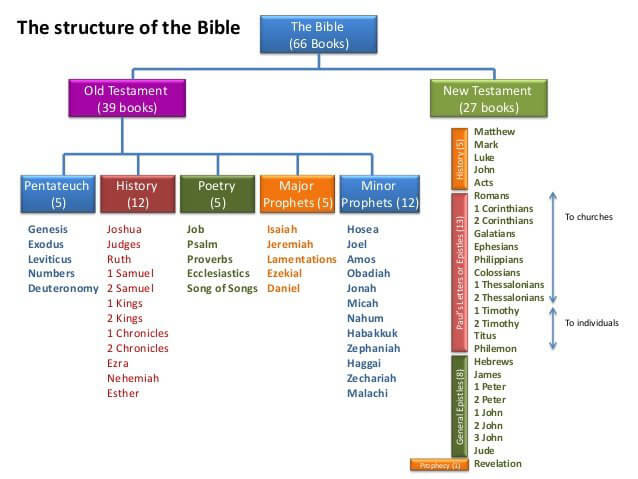
The Christian Bible consists of a total of 66 books and it is divided into two major sections.
The first section (39 books) consists of the Old Testament, which includes the Hebrew Bible (or Tanakh) plus some Greek writings. The Old Testament deals with the story of creation, as well how God relates to humankind.
The second section (27 books) comprises the New Testament, and it consists of a collection of Christian scriptures. The New Testament focuses mostly on the life and teaching of Jesus Christ.
In this article, I’ll only focus on the very first book of the Old Testament: Genesis.
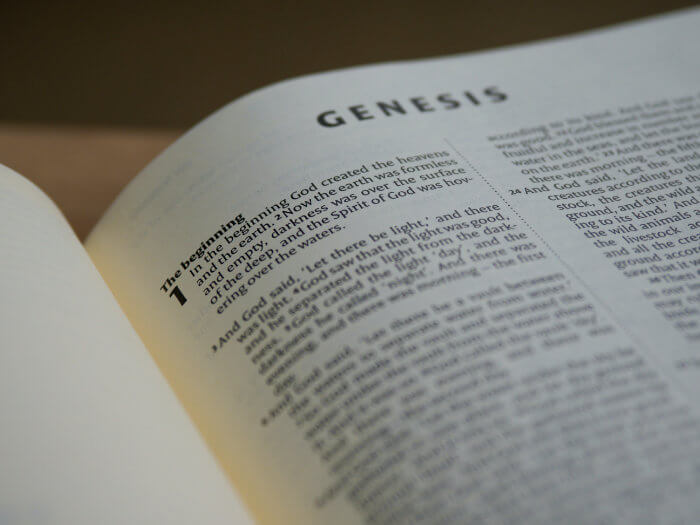
Genesis means the “origin of everything” and it is divided into 2 sections:
1) the primeval period (chapters 1-11), which deals with the creation of the world by God and the origin of humanity.
2) the patriarchal period (chapters 12-50), which revolves around the travels of Abraham and Sarah, as well as the exploits of their descendants.
Only the primeval period is of interest for the analysis of The Fountain, so that’s what I will be discussing next.
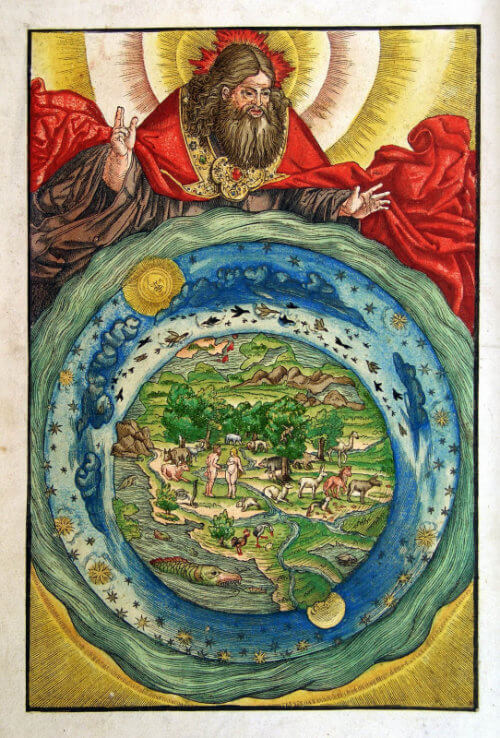
In the beginning God created the heavens and the earth.
Genesis 1:1
That’s literally the very first sentence of the book of Genesis. So, according to the Bible, God creates the entire universe out of his good will.
The initial two chapters of the Genesis also tells us that the universe begins with darkness and void. Out of this chaos, God gives order and purpose over the course of 7 days. Light, day, sky, sea, moon, stars, vegetation, animals and finally humans all spring into existence.
God creates humans on the 6th day, “in his own image”. God’s idea is to allow humanity to pretty much govern itself. God then takes a break on the 7th day.
I would like to make two observations. The first is that God creates things simply by speaking, which, as we will see below, resembles Maya creation myths. The second is that God envisioned a world inherently “good” (e.g., as can be read in Genesis 1:31), and it is with good intentions and deeds that this goodness is promoted.
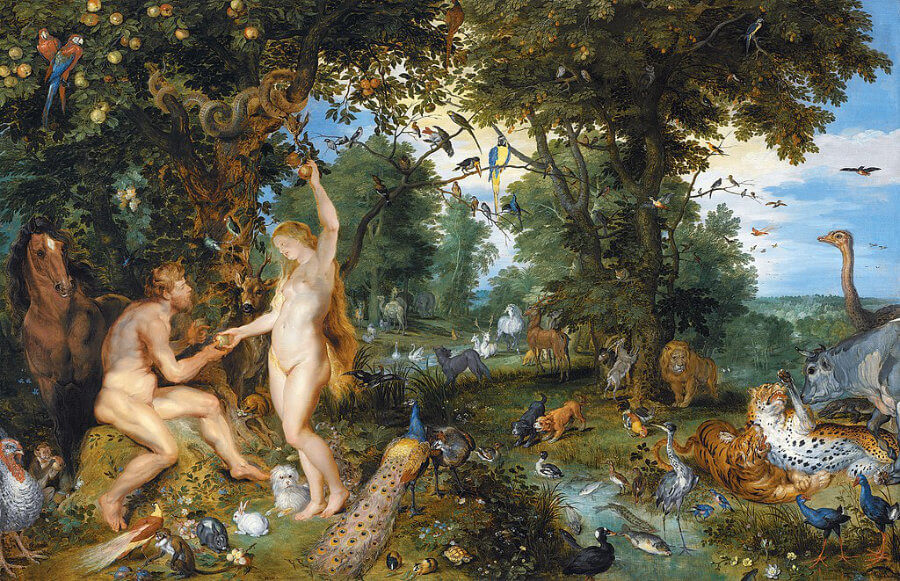
Then, Genesis 2:8 tells us that God created the Garden of Eden, a paradise with streams and plants that are suitable for food. The Garden of Eden is perfection itself, a place of beauty and harmony. In the middle of the garden there are two very important trees: the Tree of Life and the Tree of the Knowledge of Good and Evil.
There is a discrepancy now in that God is supposed to have already created mankind (see above). However, Genesis 2:7-23 mentions that God forms Adam (which means man in Hebrew), the very first human, out of dust and breathes into his nostrils, giving him life.
Seeing that Adam needs a companion, God puts him to sleep and creates Eve (meaning “life” in Hebrew) from one of Adam’s ribs.
Adam and Eve had been created without sin, as God wishes to relegate them the responsibility to govern Earth and rule over the animals. They are instructed to tend to the garden and animals, as well as to reproduce.
God allows them to eat the fruit from the Tree of Life, granting Adam and Eve the power of immortality. However, God forbids them to eat the fruit from the Tree of Knowledge of Good and Evil, as that will only end in pain and death.
Since Adam and Eve were formed from the same body (from Adam’s body), some believe this represents God’s intention of a marriage for life and in communion with God.
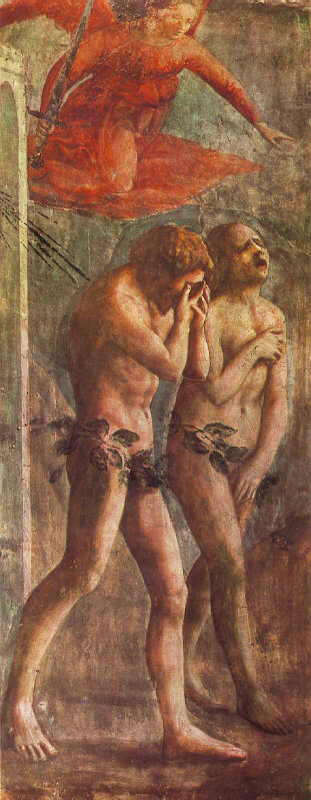
But then, in Genesis 3:1, a serpent insinuates that God must be concealing something great, and that by eating the fruit from the the Tree of Knowledge of Good and Evil, they may become Godlike. Driven by lust, Eve eats the fruit and gives some to Adam. Right away, they become aware of their nakedness and feel ashamed, quickly covering their privates with leaves.
God is unforgiving. He punishes the serpent, he warns Eve that she and her descendants will suffer pain in childbirth, and tells Adam he, from now on, will always need to toil for food.
Adam is expelled from the Garden of Eden and Eve follows him.
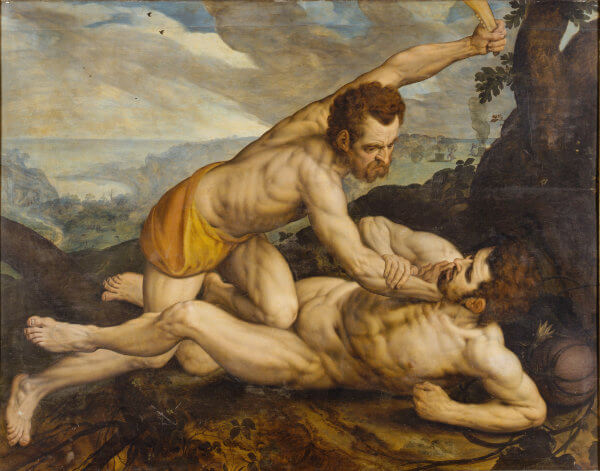
As you might have noticed, the Bible starts with a fairly positive mood: God creates Earth, he produces a paradise on Earth, Adam and Eve connect. Things look pretty good. Gradually, however, the mood starts to darken.
Once Adam and Eve are expelled from the Garden of Eden, humans are barred to eat the fruit from the Tree of Life, so they turn mortal. God stations a cherubim with a flaming sword to guard the path towards the Garden.
Humankind is now in constant danger, and will be tormented by evil, suffering, pain and death.
Adam and Eve eventually have two sons: Cain, a farmer, and Abel, a shepherd. Cain and Abel make regular offerings to God, who favours the offerings brought by Abel.
Cain becomes increasingly jealous of Abel, and despite God’s warnings to quell sinful temptations, Cain murders his brother.
God finds out what Cain had done and banishes him to the land of Nod, but not before branding him (the mark of Cain) as a sign of protection.
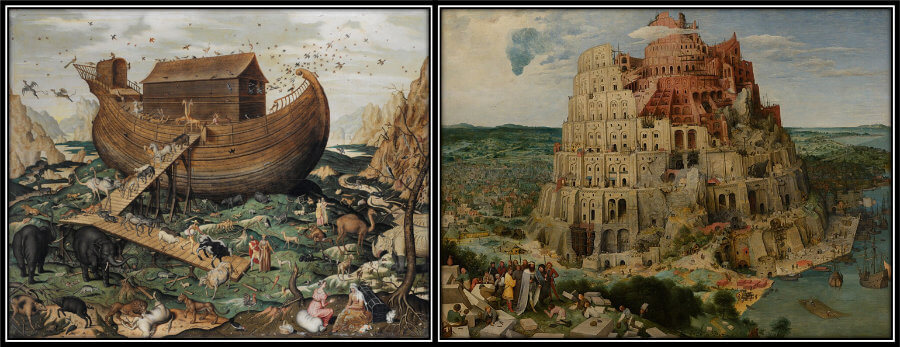
It doesn’t take long until God becomes disappointed with how things are turning out, by how corrupted and mean people have become. He decides it’s time to wipe out all creatures from the face of the Earth, so that he can remake the world.
Only one man seems worth saving, and that is Noah.
So God orders Noah to build an ark and board along with his family and one male and female member of each animal species. As soon as they are all safe inside the ship, God floods the entire planet, killing everything but the passengers of the ark.
After the deluge wanes off Noah leaves the ark, effectively becoming a second Adam in a renewed and cleansed world. He and his descendants procreate, eventually populating the Earth with multitudes of peoples.
Some of these travel to the land of Shinar, where they begin to build a tower in the shape of a pyramid with the intent to reach the heavens – the tower of Babel.
They are proud of this achievement, which Gods sees as a sign of arrogance and thirst for power.
He then decides to split the people of Shinar and scatters them around the world. By doing so, God is really preventing the people to complete the tower.
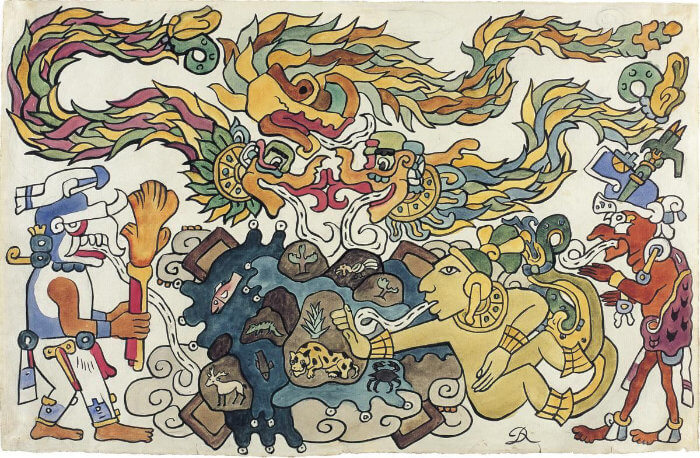
Just as the Bible includes a mixture of historical accounts and myths, so does the the sacred book Popol Vuh (Book of Advice) recounts the history and mythology of the Maya.
The Maya believed that the Earth was flat, with 13 levels of heaven above it and nine levels of underworld below it.
Before time existed, nothing existed but waters running infinitely beneath a blank sky. In the waters lived the sea god Gucumatz. In the sky, the god Huracán.
The two gods eventually meet and start conversating and discussing how life should be in the world (how trees should grow, how people should walk, etc). They also discuss that the waters should be cleared so that earth could emerge. Their words were what originated life.
After plants, the gods set about creating animals. Deer, pumas, snakes birds and other animals were appointed to inhabit a specific habitat.
The gods ordered the animals to speak and to honour them for giving life to the forests and mountains. However, the animals could not speak, so they got disappointed as they were looking forward for a creature which could keep count of days and praise them and offering them sacrifices. So they decided to make human beings.
After a failed attempt with mud, the gods consulted a deity couple, Xpiyacoc and Xmucané, and asked them if wood would be a suitable material to make human beings. The pair of deities responded affirmatively, so Gucumatz and Huracán filled the world with wooden people.
Even though the wooden people were an upgrade relative to the mud people, the gods were dissatisfied, for even though they could speak, their minds were empty – they did not remember their creators, let alone honour them.
So, away with the wooden people. Huracan produced violent rainstorms, and the resulting floods drowned most wooden people. The survivors were devoured by monsters unleashed by the gods, or attacked by the animals.
There were a few survivors though, who the gods allowed to continue living, and these became the monkeys.
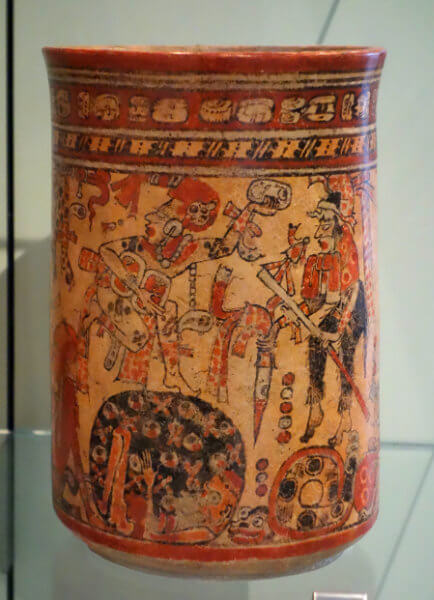
Now, Xpiyacoc and Xmucané had two sons: One Hunahpú and Seven Hunahpú. They loved playing the Mesoamerican ball game, but when they did, it was so loud that the noise would reach the underworld, a place called Xibalba.
The lords of the underworld, One Death and Seven Death, were extremely annoyed by the racket so they decided to challenge the brothers to play ball in Xibalba.
One Hunahpú and Seven Hunahpú immediately agreed, but when they arrived at Xibalba, they were greeted with practical jokes by the lords of Xibalba. One of these consisted in giving the brothers a burning torch and two lighted cigars. The lords of Xibalba told them that, on the day of the game, neither the flaming torch nor the cigars could have been burned down.
It was a fool’s errand.
When One Hunahpú and Seven Hunahpú met the lords the next morning and showed them the remains of the cigars and torch, they were sentenced to death. One Hunahpú’s head was cut off from his body and placed in the fork of a tree. His body was buried near the tree, together with his brother.
To the astonishment of the lords of Xibalba, the tree flourished beautifully, and from then on, this tree became sacred.
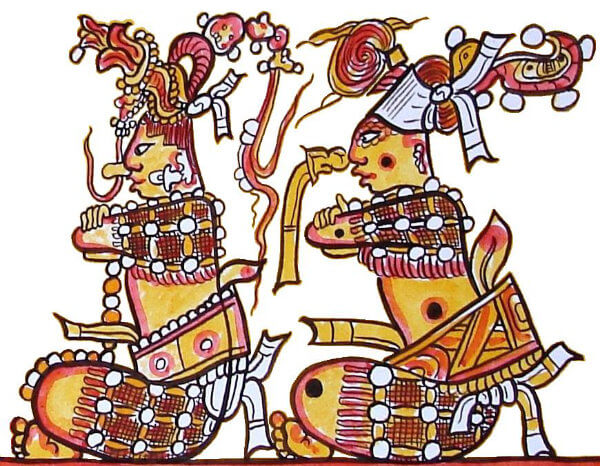
One day, the daughter of one of the underworld lords was passing by the tree and when she tried to pick a fruit from the tree the head of One Hunahpú spat on her hand. As a result, she became pregnant with twin boys, which later became known as the Hero Twins.
After they were born, they quickly found a penchant for their father’s ball game.
It wasn’t long until the lords of Xibalba summoned the youngsters to a match in the underworld. They tried to trick them in the same ways as they tricked their father, but the Hero Twins didn’t fall for any of underworld lords’ tricks.
Despite devising many more tests to trick and defeat the Hero Twins, the two brothers always managed to outwit the lords of the underworld.
After conquering death, the Hero Twins rose to the heavens to later become the sun and the moon.
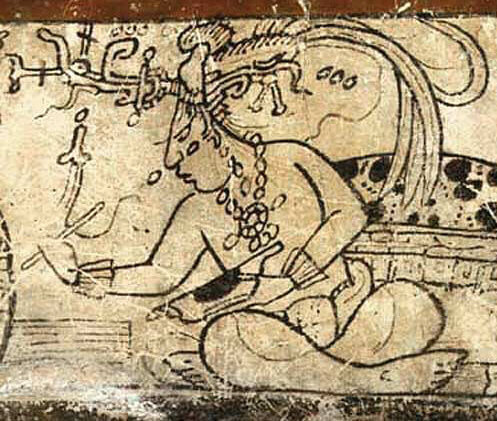
Now, before departing to the skies, the Hero Twins reassembled the body of their father, One Hunahpú, who was to remain in Xibalba and be honoured by all men. One Hunahpú became the Maize God (or First Father), and he is the creator of the current world age.
One of his first actions was to raise a huge world tree (a maize plant) that supported the center of the Earth and connected the three realms: earth, heavens and underworld.
But there was still the issue of creating humans capable of offering praise, the original task by the gods of the sea and sky, Gucumatz and Huracán.
They received news by four animals: a crow, a parrot, a rabbit, and a coyote, about the presence of corn and other edible things in the mountains.
The animals gave the gods samples of corn ears, with which the gods had them modeled into human beings. Satisfied with the results, these four beings became the founding fathers of the principal Maya lineages.
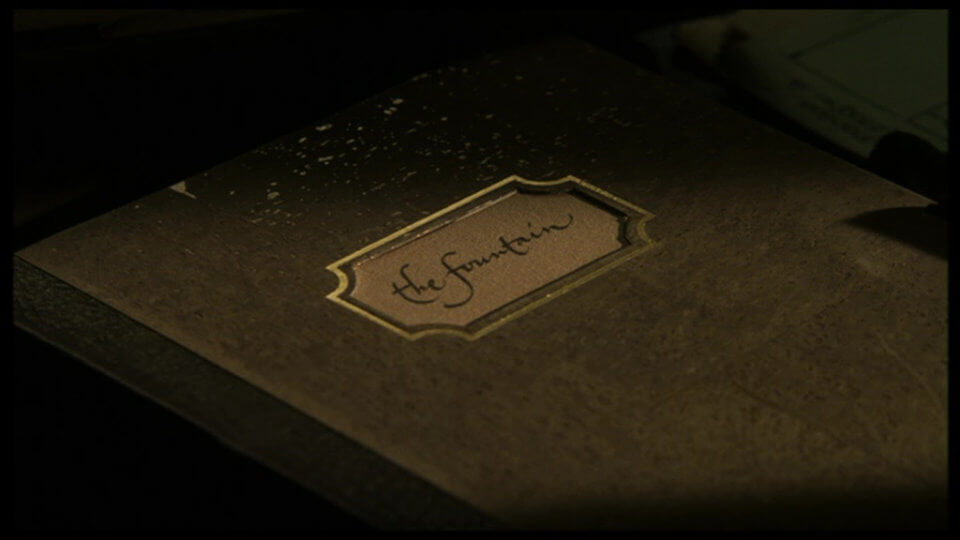
The film opens with this quote:
“Therefore, the Lord God banished Adam and Eve from the Garden of Eden and placed a flaming sword to protect the tree of life.”
Genesis 3:24
This is actually a modified version of the original phrase. According to the New American Standard Bible, Genesis 3:24 reads:
“So He drove the man out; and at the east of the Garden of Eden He stationed the cherubim and the flaming sword which turned every direction to guard the way to the tree of life.”
Genesis 3:24
There are many biblical and Mayan mythology references in the movie The Fountain. In my view, these references are meant to portray Tom’s emotional journey towards acceptance of mortality.
Tom (or, perhaps more precisely, Tom’s mind) is in fact a composite of both Tomás Verde and cosmonaut Tommy.
In the following sections I will elaborate on this.
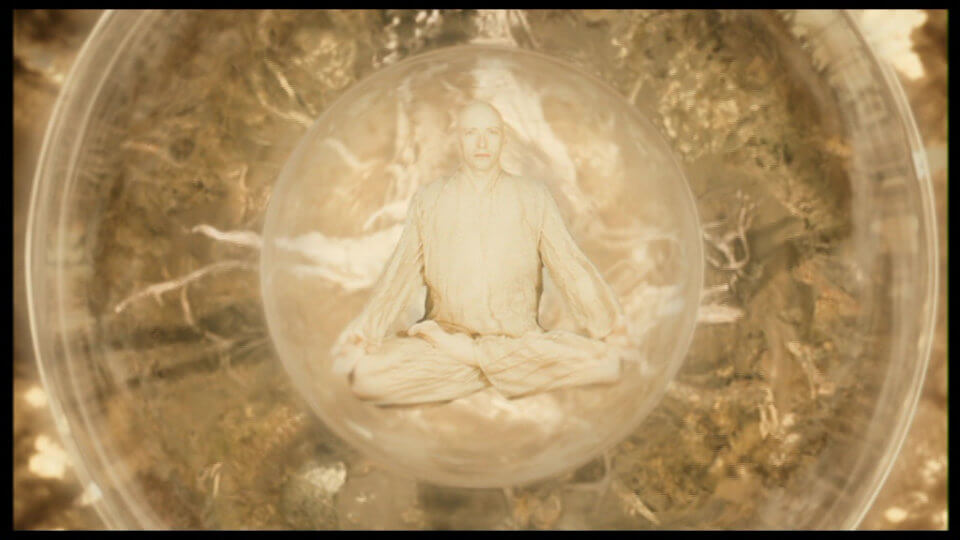
In the future, cosmonaut Tommy is on a journey to reach Xibalba, the nebula containing the dying star. He is traveling with a tree from which he eats the bark to be able to remain immortal. The cosmonaut says that once Xibalba dies (i.e., when the star goes supernova) the tree will be reborn – it will bloom.

It’s clear that the tree the cosmonaut is speaking with is a version of Izzi. For example, when the cosmonaut interacts with it, the hairs of the tree lift up, just as when present-day Tom kisses Izzi in the neck, making the hairs lift up.
Also, whenever the cosmonaut speaks to the tree, the things he says are reminiscent of what Tom whispers to Izzi in several parts throughout the film. For example, the cosmonaut approaches his lips close to the tree and whispers “Don’t worry, it will be alright”. Tom also has the habit of whispering things to Izzi, like when she was at the hospital and Tom whispered “It’s ok Iz. Everything is going be alright.”
So the cosmonaut believes that when he and Izzi (the tree) reach Xibalba, Izzi will somehow resuscitate (become human?).
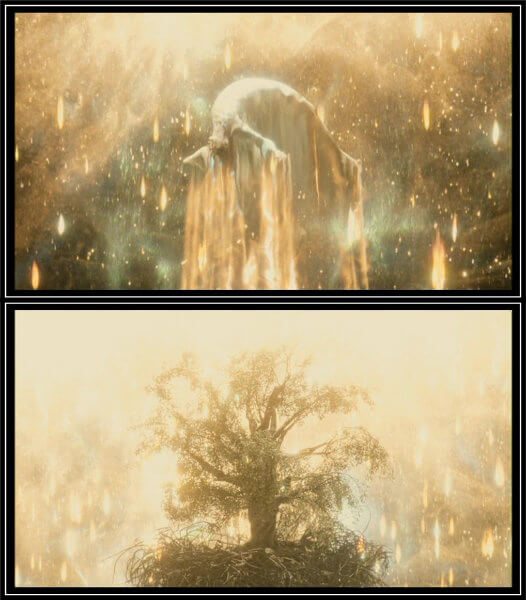
Some authors have suggested that perhaps the cosmonaut’s story really takes place in the future. That somehow Tom manages to live for hundreds of years and is on the quest to revive Izzi.
I once saw this possibility likely, but now find it very unlikely.
Let’s first list the arguments why this possibility was considered.
It’s true that after Izzi’s death, Tom decides to continue his research into finding a “cure” to death. An argument could be made then, that Tom succeeded and applied his antidote on himself, allowing him to live for as long as he liked.
However, this doesn’t really fit. First of all, even if he miraculously found a way to cheat death, we would need to assume that he succeeded within a few years after Izziy’s death (the cosmonaut looks about the same age as Tom after all), which is extremely unlikely.
Second, when the star explodes into a supernova, the cosmonaut is incinerated and the atoms that comprised Tomas are absorbed by the tree which we see flourishing for a brief moment. Well, if a tree is in outer space, it will die immediately, especially with the blast from a supernova. So, I tend to see the blooming as a metaphor for Tom and Izzi’s rejoining.
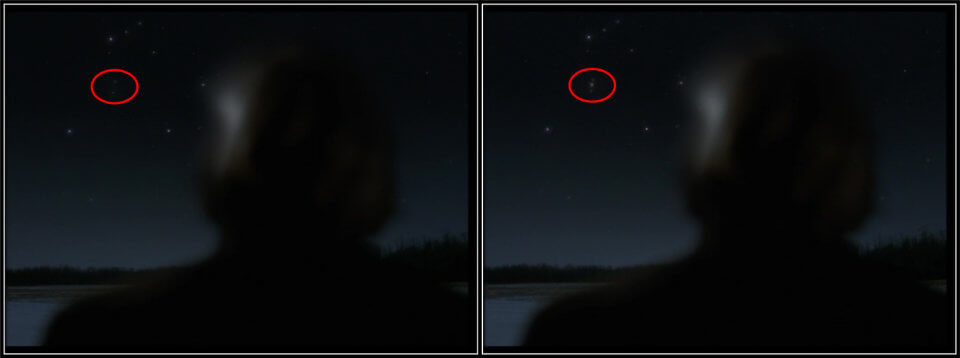
Third, at the end of the movie, Tom seems conformed with Izziy’s death and says his goodbyes at her grave. Moreover, when he looks at the nebula, it suddenly vanishes. Now, this coincides with the explosion the cosmonaut was involved in. So these two events appear linked, and as I argued above, I believe this is because the cosmonaut is somehow the mind of Tom.
Also, when the conquistador dies, the ring mysteriously appears next to the cosmonaut. Even if Tom had found the antidote to live forever, that wouldn’t allow him to conjure things up out of thin air.
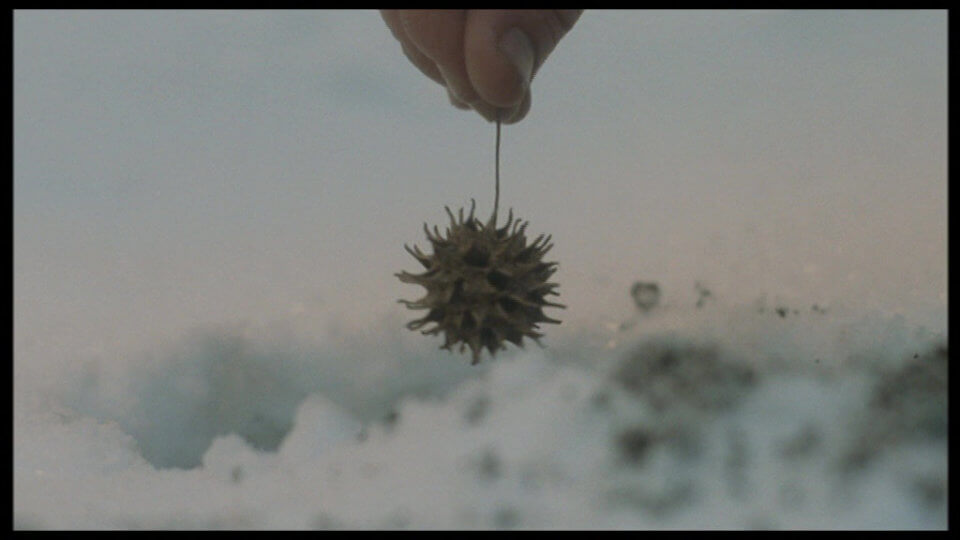
There is, however, another point in favour for the cosmonaut being real. After Izzi’s death, present-day Tom plants a sweet gum seed over Izzi’s grave. Izzi had previously told Tom the story of a Mayan guide whose father had died but he planted a seed at his father’s grave. The seed became a tree, nourished by the nutrients of the father’s corpse. The father grew into the wood and flowers, and when a sparrow ate the tree’s fruit, his father flew with the bird.
So, you could argue that Tom intended a similar thing to happened with Izzi. He planted the seed and waited until it matured, so that it could absorb the nutrients from her body.
But here’s the problem. Assuming that conditions are perfect and the seed does sprout, the rate at which a sweet gum tree grows is about 5 cm (2 in) per year. For the tree to reach the maturity we see in The Fountain, Tom would have to wait at least 30 years! Not a problem if he found the cure to immortality, but, again, he would be an old man by then…
And then Tom would need to overcome some serious hurdles: for example, ensure that he removed the tree from the soil while preserving Izzi inside, prevent that sparrows come and eat the fruit and take her somewhere else, and so one and so forth. You see the problem surely.
So, I don’t think Tom took Izzi’s story in the literal sense (he’s a scientist after all). His action of planting the seed at her grave was more symbolic, in my view.
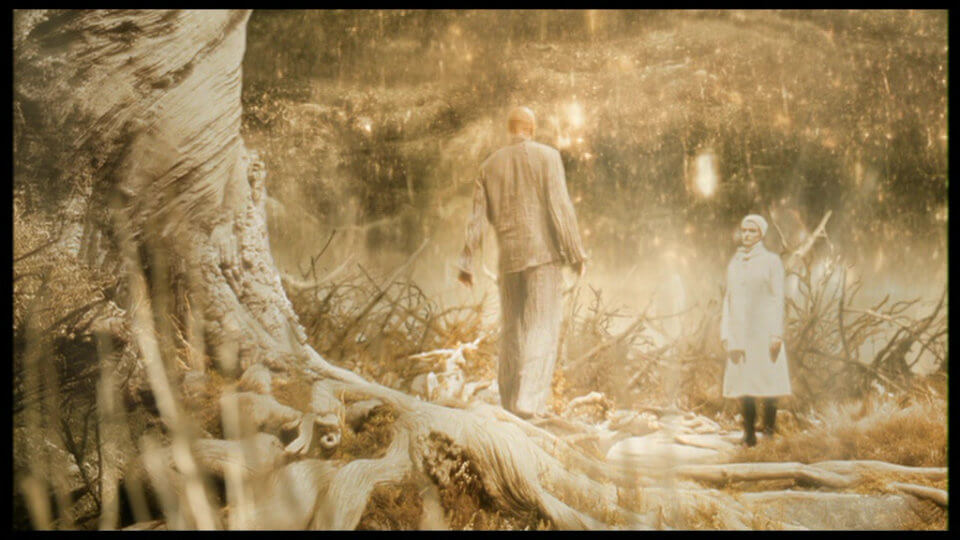
My interpretation of the future scenes is simply that they are the events unfolding in present-day Tom’s mind.
For one thing, the cosmonaut appears to have hallucinations about actual memories from present-day Tom. Here are some examples:
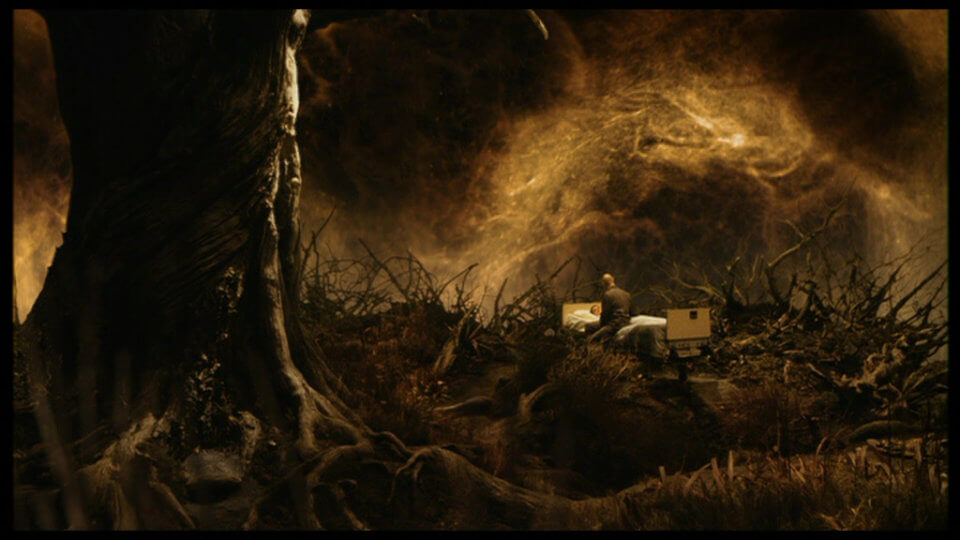
1) When Izzi comes to Tommy’s office and asks him to take a walk with her, or when he sees her in a hospital bed. For example, after Izzi has a seizure and ends up in the hospital, Tom sits next to her. In the next scene, we see the cosmonaut also sitting on a hospital bed where Izzi is lying. However, when the cosmonaut gets up, both the bed and Izzi suddenly vanish.
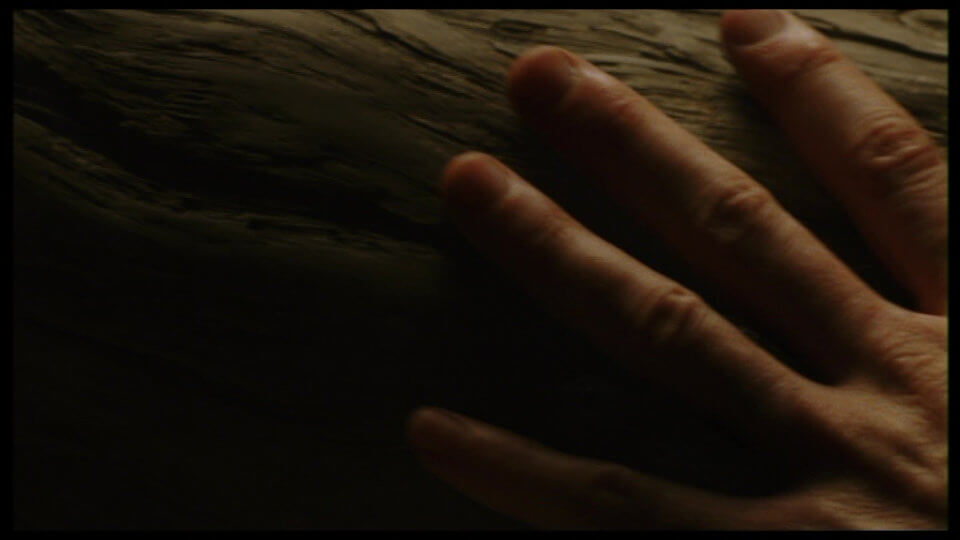
2) Also, at some point in the film, the cosmonaut caresses the tree and the movement continues with the tree being replaced by Izzi’s body in the present timeline.
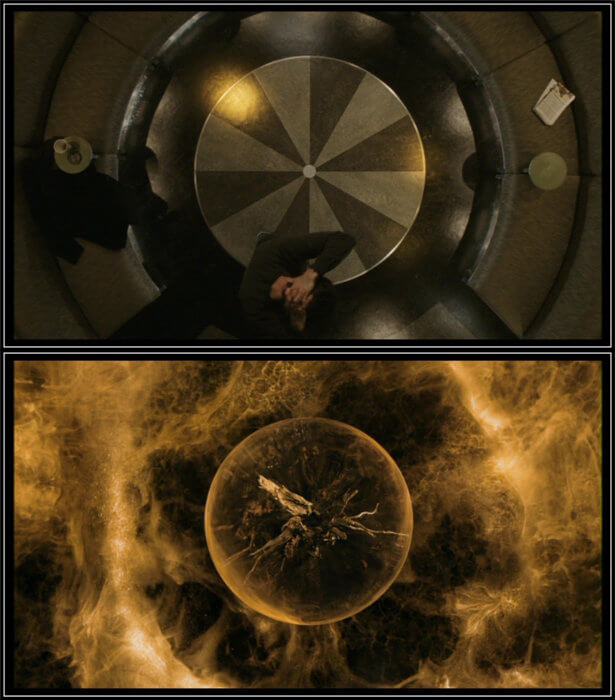
3) After Izzi collapses at the museum we see the cosmonaut’s spaceship turning counterclockwise. That image is faded and replaced by Tom moving in circles, also counterclockwise
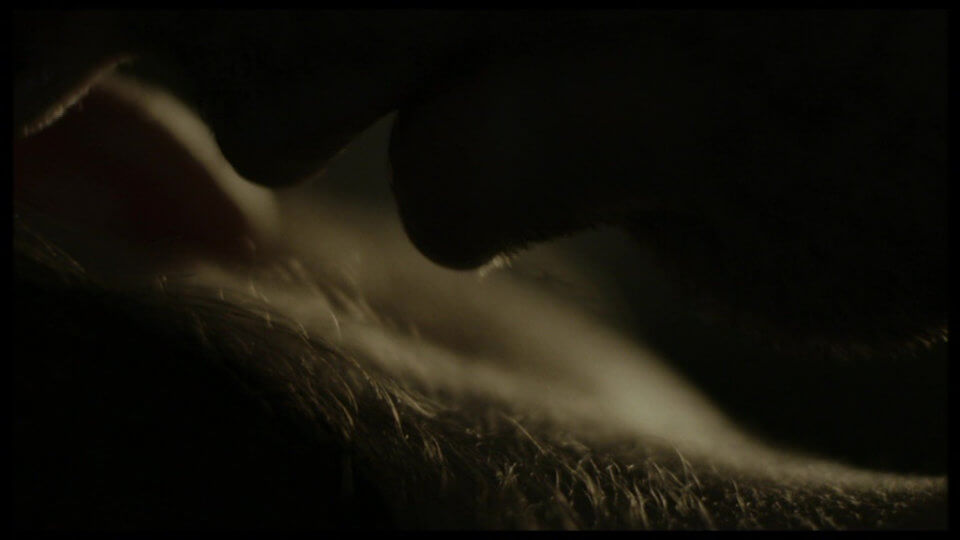
4) When Tom whispers to Izzi “Don’t worry. We are almost there.” at the hospital, the cosmonaut had said the same thing to the tree a few moments before.

5) When Tom tattoos a ring on his finger with ink and sees the result, the cosmonaut does the exact same thing.
6) Izzi’s death at the hospital coincides with the death of the cosmonaut’s tree.
Note how closely linked the timings these events in present and future are occurring. It’s as if the the events of the future were a representation of present-day Tom’s emotional mindset.
In this vein, the cosmonaut is Tom’s mental construct of his refusal to accept that Izzi is dying and there is nothing he can do about it.
At one time, Izzi says to present-day Tom “Finish it!” so that he finishes the last chapter of her book, which Izzi decided not to write.
Why not?
Because she is trying to help Tom come to terms with the fact that she is going to die, and that he shouldn’t be afraid. That is why she begs him to listen to all those stories about Mayan mythology related to death and rebirth. For example, giving him hints such as the book beginning in Spain but ending in Xibalba, the place where the dead souls would be reborn. Or when she asks him his opinion about “Death as an act of creation”. Or when she tells him that she has been trying to write the last chapter but she hasn’t been able to get the sentence “Death was his father’s road to awe” out of her head.
By gradually priming Tom to see death from the perspective of Izzi (who by now has come to terms with her imminent death and isn’t afraid anymore), Izzi believes it will make him see that he too shouldn’t be afraid of death.
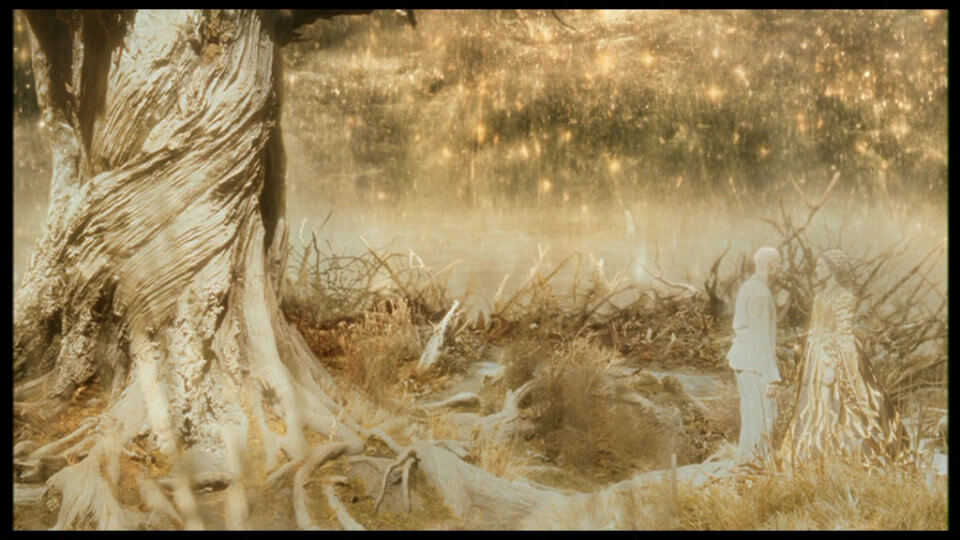
The cosmonaut appears tormented by Izzi’s constant whisperings “Finish it!”. But once present-day Tom accepts Izzi’s departure from this life, the cosmonaut realises he is going to die (during the encounter with the queen of Spain) and appears as though he has found his inner peace.
So, in my view, the cosmonaut is not real, at least not in the physical sense. The cosmonaut’s journey is Tom’s own journey. They are one and the same.
Interestingly, in the special edition of the DVD, the production designer mentions that the journey from the lift to Izzi’s room is essentially the journey of the cosmonaut’s spaceship from Earth to the dying star. In a way, this corroborates the view that the present and future events are interconnected.
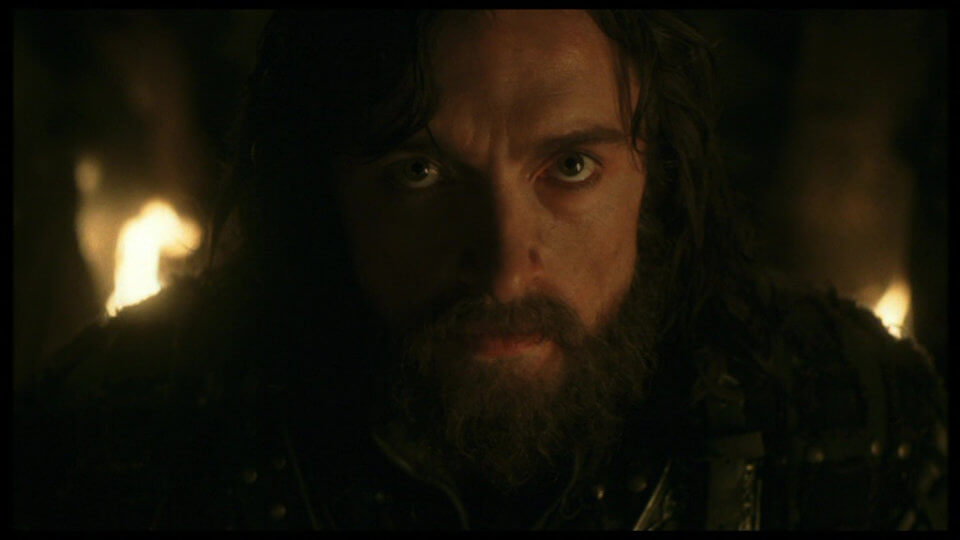
The past is perhaps the least ambiguous part of the entire film. Many clues converge to the idea that the events surrounding Tomás Verde are a visualisation of the events in the novel Izzi is writing.
Here are some clues:
1) Izzi explicitly mentions that she is writing a novel about 16th Century Spain.
2) Izzi is fascinated by the Maya civilization – she has gone to South America to learn about the Mayan culture.
3) Some phrases used in the conquistador story are direct quotes from Izzi. For example, when Izzi is in the hospital she says the phrase “The road to awe” to Tom. The Mayan priest in the Conquistador story says the exact same phrase (in the proto-Mayan language).
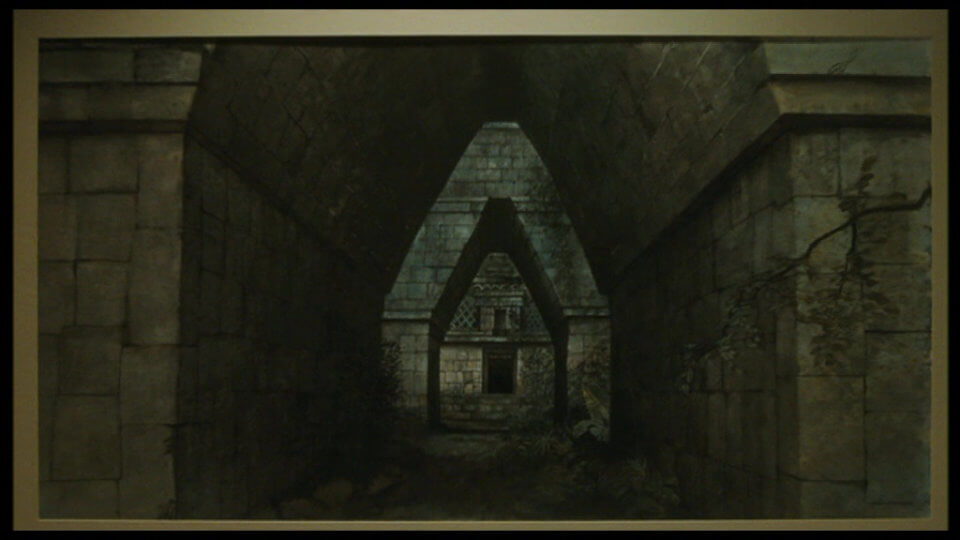
4) There is a drawing of the entrance of a Mayan pyramid when present-day Tom returns home from work. That entrance is strikingly similar to the entrance to the pyramid containing the tree of life we see in the Conquistador story.
5) When Tom reads the book, we are able to read some of the passages which sound like the Conquistador story.
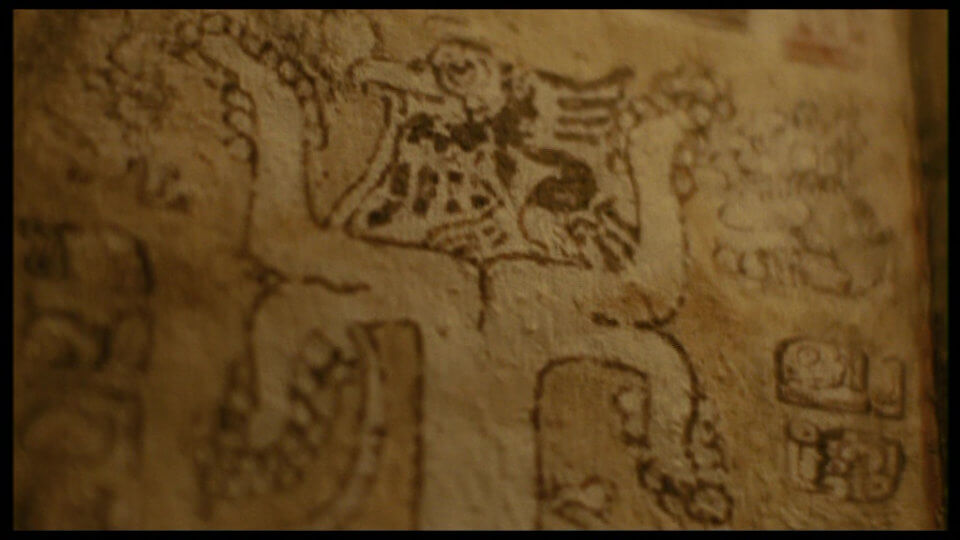
6) The book at the museum explains the Maya creation myth. The First Father is the first human who sacrificed himself to make the world, which is what the Maya priest says to Tomas at the pyramid. Izzi also mentions the tree of life bursting out of First Father’s stomach. His body became the tree’s root, which is what happened to Tomas after drinking the sap of the tree.
This all looks reasonable and all the reviews I’ve read do not contest this possibility.
However, I believe there is more to it.
In my view, the past time-line is not solely a visual transcription of the events in Izzi’s book. Just as the cosmonaut’s journey represents present-day Tom’s acceptance of death, so is the past time-line a complement of that journey.
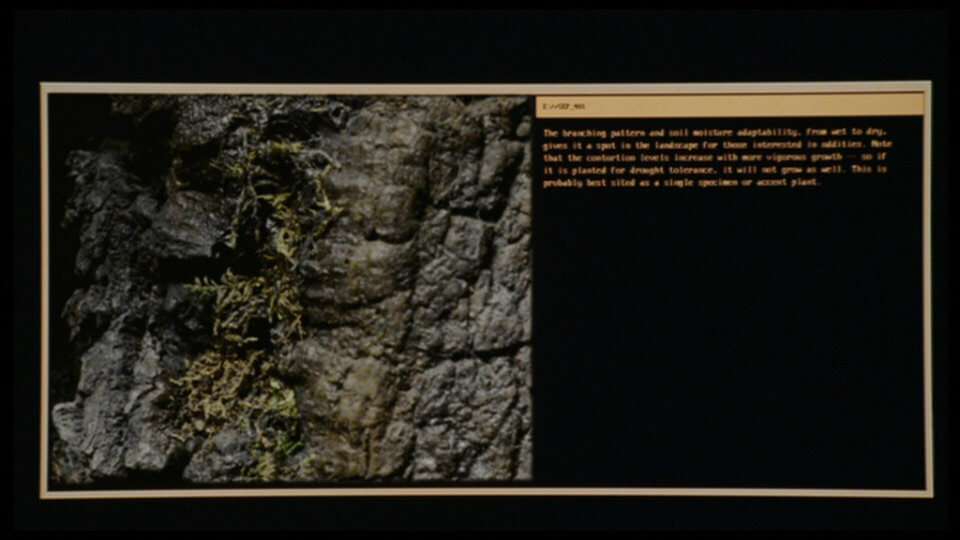
The story Izzi is writing is about Queen Isabella of Spain who is loosing her Kingdom to, and being held captive by, the Inquisition. Sending Conquistador Tomás Verde to find the tree of life so that he and she can become immortal. The queen gives Tomás a ring for him to wear when he finds Eden, and when he returns she shall be his Eve and together they will live forever.
Izzi also tells Tom that the story begins in Spain but ends in Xibalba.
First, can you see the parallels between the life of Tomás/Queen and Tom/Izzi? Just as Tom thinks the salvation to Izzi’s cancer lies in the botanical compound found in South America, so does the salvation of the Queen lies in the Tree of Life located somewhere in the jungles of South America.
In the sub-section Creation, I mentioned that God gave Adam and Eve full liberty to eat the fruit from the Tree of Life which allowed them to remain immortal. The Tree of Knowledge of Good and Evil was, however, off limits.
Adam and Eve disobeyed God, and ate an apple from the forbidden tree, resulting in their expulsion from the Garden of Eden.
I kind of see a parallel between Adam and Eve’s temptation to eat the fruit of the Tree of Knowledge of Good and Evil, with Tom’s and Tomás’ futile quest to cheat death.
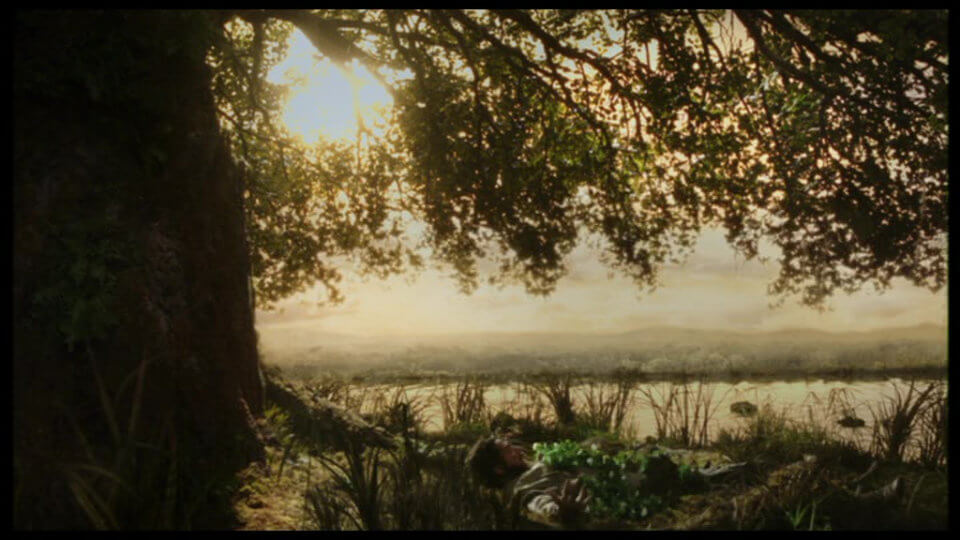
Second, Tom says: “Death is a disease… it’s like any other. And there is a cure. A cure. And I’ll find it.”. When Tomás greedily drinks the sap from the Tree of Life, he dies in the process, being transformed into vegetation. In a way, I see the tragic ending of the Conquistador as an allusion to Tom’s pointless objective to cure death.
It is also interesting the desperation and poor reason shared between Tomás and Tom Creo in their search for immortality. The conquistador wants to find the tree of life at all costs, even if that means killing his fellow conquistadors. Tom wants to find the cure to death at all costs, even if that means alienating everyone around him, spending little time with Izzi and ignoring all ethical responsibilities.
Remember the story of Adam and Eve? They were expelled from paradise because they were tempted to become more omnipotent like God. Tomas sipping the sap from the Tree of Life, or Tom Creo attempting to cheat death, is like trying to play God – a futile task.
Another interesting reference to the bible has probably gone unnoticed by many viewers. After Izzi suffers a seizure at the museum, a disoriented Tom goes back to his research lab and insists in going forward with his research. We notice that his colleagues are reluctant, because Tom is acting unethically.
During surgery, he asks his colleagues to prepare another monkey by the name of Cain. If you read the section Uncreation, you will know that Cain, filled with jealousy and greed, kills his own brother and tries to omit the assassination from God. God punishes him by sending him away.
My interpretation is that Tom does not want to concede that he can do nothing to prevent Izzi’s death and insists in finding a cure that will never materialise (at least not in his lifetime). His thirst to succeed leads him to do unethical research, distance himself from reality, and pushing everyone away.
There are subtler clues to suggest that, just as the future and present are linked, so is the past also connected to the present.
For example, during a scene we see Tom driving his car on an empty road in the direction of the city. The same scene is shown in the past but instead of a car, Tomás is riding a horse towards the city where the Inquisitor is located (see video above).
If you observe these two scenes carefully, you’ll notice that Aronofsky used the same shooting technique in both: in the distance the camera is shooting upside down, and when the car/horse pass by the camera, it shoots upright, with the car/horse disappearing as it travels towards the city.
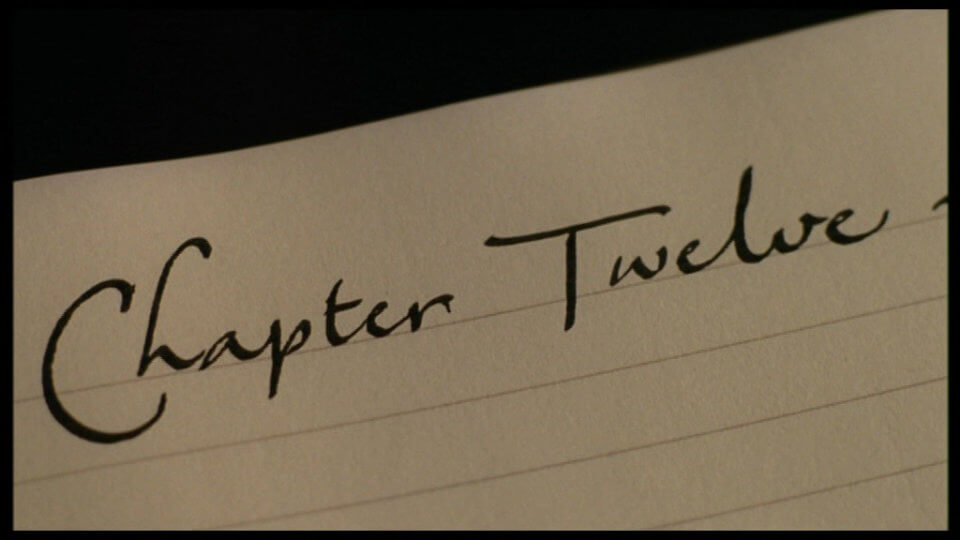
The Mayan priest says “The First Father sacrificed himself for the tree of life. Enter and share his fate! Death is the road to awe!”.
If you listen carefully, the priest then says “Xibalba” at the end of the sentence in the proto-Mayan language that he is speaking. Xibalba is where the Mayans believed resided the underworld. The Mayan priest represents the guardian of Xibalba, he is one of the lords of the underworld.
The connection between the Mayan priest with the flaming sword with the bible is also interesting. In Genesis 3:24, God stations a cherubim in front of the Garden of Eden with his flaming sword to prevent human access to the Tree of Life. The Mayan priest appears to be fulfilling that role.
With the intervention of the cosmonaut the Mayan priest mistakes (or maybe not) Tomás with the First Father. Interestingly, after drinking the sap, Tomás has a similar fate to that of the First Father in Mayan mythology, his body becoming part of the tree.
Now, the last chapter Izzi wrote (Chapter 11) ended climatically when the Mayan priest was about to strike Tomas with his fire sword.
Tom will now have to give an ending to the novel, and most sources agree that the events that unfold is present-day Tom’s conclusion of Izzi’s story.
If so, choosing to save Tomás from the Mayan priest only to have him killed after finding the much-sought tree of life is nothing but ironic.
In a way, this ending could represent present-day Tom’s realisation that nobody should be above Nature and that everyone should accept mortality and come to terms with it.
As a curiosity, the unfinished chapter is Chapter 12, which is an interesting choice of a number. Twelve is a recurrent number in the bible and mean the complete people of God. For example, Jacob has 12 sons, who later will become the 12 tribes of Israel. Jesus chose 12 disciples. More importantly for this analysis, the Tree of Life bore 12 crops of fruit (Revelation 22:2).
Maybe it’s a coincidence, but maybe it isn’t – after all, 12 chapters seem rather few for a novel.

Hugh Jackman said in an interview that the three characters (Tomás, the conquistador, present-day Tom and the cosmonaut) are “in essence the same man”.
I wholeheartedly believe so.
In the previous sections I attempted to make the point that past and present, as well as future and present, are connected. In a way, the past and the future are simply peeks into present-day Tom’s mind.
If my interpretation is correct, then, by the this logic, the past and the future should also be linked, and the bridge connecting them is, again, Tom’s mind or consciousness.
For instance, when Tomas reaches the Tree of Life, he approaches his fingers and the hairs of the tree raise, just like the cosmonaut did with his own tree.
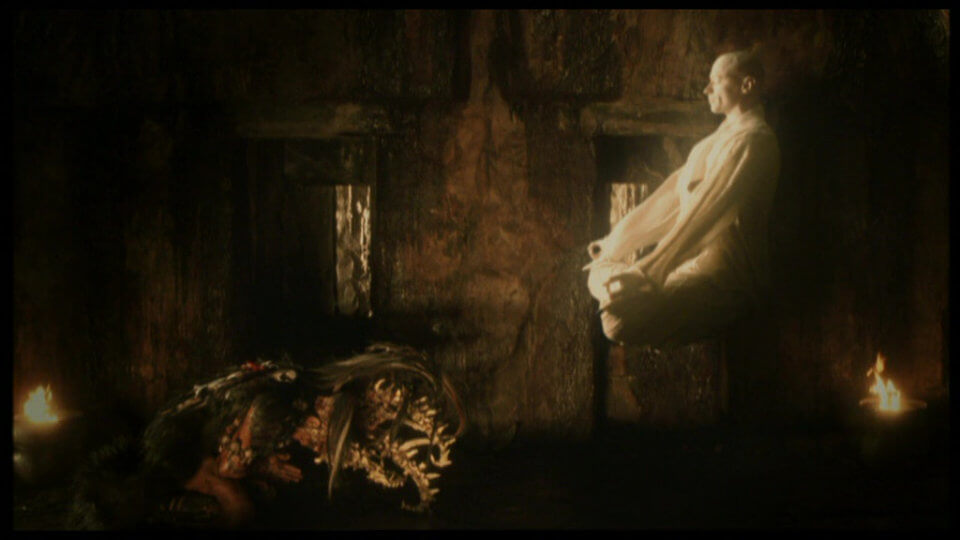
However, the most obvious connection is when the Mayan priest is about to strike a deadly blow on Tomas. The cosmonaut suddenly appears hovering above ground, in a meditating pose. Tomas is nowhere to be seen, only appearing after the cosmonaut disappears.
Now, this scene was very confusing to me at first. The Mayan priest seems to actually see the cosmonaut, who he believes to be the First Father (see the section The Maya: The story of creation). So it’s as if the two time lines interact, which is why some authors have suggested that both are real. For instance, the cosmonaut may use meditation to open a psychic link into the past.
However, there is another and, in my opinion, more credible possibility. Note that Tomás and the cosmonaut never appear together. In the scene where the cosmonaut appears before the Mayan priest, either the cosmonaut replaces Tomás, or Tomás replaces the cosmonaut. They are never both present in the same physical space. This tentatively suggests that they are one and only one character.
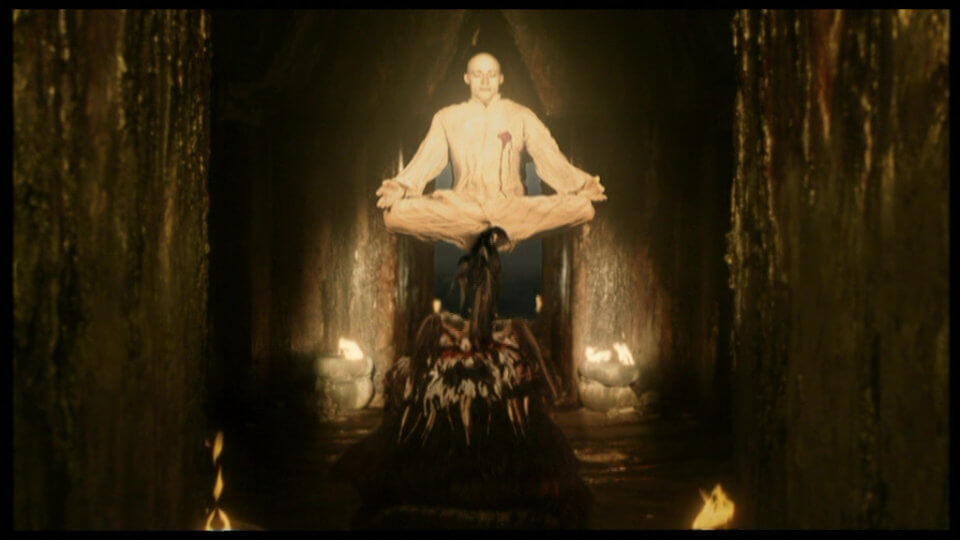
Also, play close attention to the part when the cosmonaut levitates in front of the Mayan priest. He’s bleeding from his left side, as if he’d been stabbed close to the heart. Tomás was actually stabbed on the left side of his belly, but maybe Aronofsky didn’t want to give it away too obviously. Still, the fact both men are bleeding is another clue that the two men are one and the same.
And since the story with the conquistador is most likely the story envisioned by Izzi (as established above), then the cosmonaut appearing in that story must mean that he isn’t real either – it just wouldn’t make sense.
The cosmonaut is visited by the queen, and is relieved that he’s going to die. He hears once more Izzi’s voice saying “Finish it!”, at which point he agrees and says “Okay!”. Then we go back to the present, where we see an alternate version of the scene when Izzi asks Tom to take a walk in the snow. Instead of going back to the lab to perform the surgery on Donovan, Tom leaves the lab and meets Izzi outside.
Why are we seeing this alternate version of the present, which clearly did not happen?
My take is that this marks the pivotal moment when Tom has accepted mortality and Izzi’s fate. He isn’t afraid anymore. Had he been given the chance to go back in time, Tom would have chosen to be with Izzi in the snow, not chasing a cure which would never materialise in time to save her.

At this point, the cosmonaut leaves his spaceship and travels towards the dying star (Xibalba). The camera zooms in on his forehead, where the fight between the Mayan priest and Tomás resumes. We also hear Izzi again saying the words “Finish it!”.
Once again, there are two subtle clues here to suggest the past and future time lines are interwoven, in the sense that they are happening inside present-day Tom’s mind. The first clue is the zooming in, as if indicating that we are entering Tom’s consciousness. The second, we hear Izzi muttering the words “Finish it!” just about when Tom is supposed to continue Izzi’s novel (remember, Izzi stopped writing right when the Mayan priest is about to strike Tomás with the fire sword).
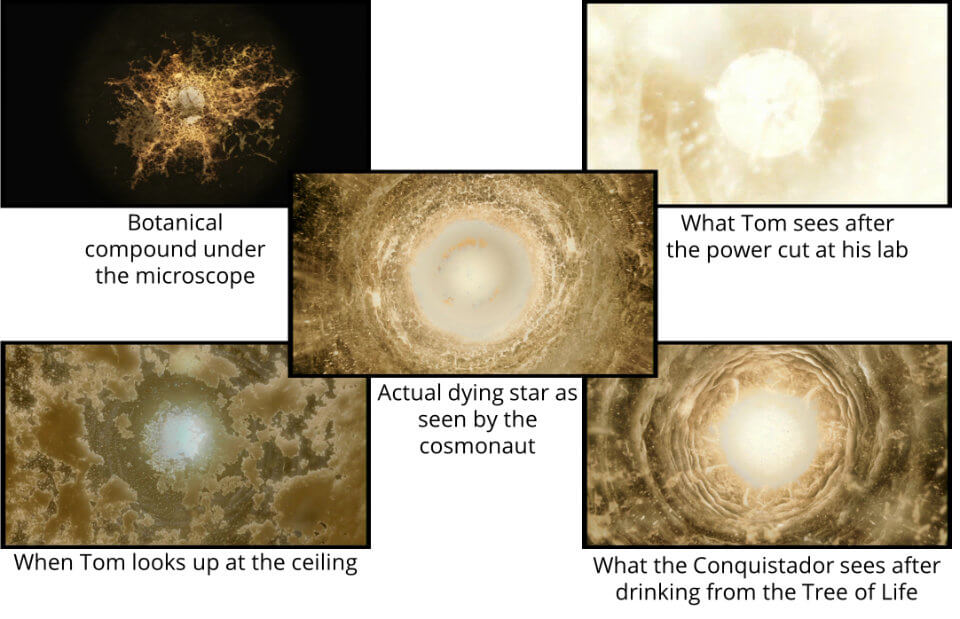
Lastly, the dying star provides another glue linking all three time-lines.
In the present, when Tom has the epiphany to use the botanical compound from a tree they found in Guatemala, he looks to a hole in the ceiling and sees a light which looks very much like the dying star.
Then, Tom looks at the compound through the microscope, and, again, we see an image that looks astonishingly similar to the dying star.
Futhermore, close to the end of the film, he goes back to his lab and the lights go out. He then looks up and sees again the dying star about to burst.
In the past, when Tomás drinks the sap from the Tree of life, he looks up and sees something that looks strikingly similar to the dying star, just moments before going supernova.
In the future, after Tomás Verde dies, the cosmonaut is incinerated by the supernova explosion. Shortly after, present-day Tom looks up in the sky and sees the nebula disappearing, Xibalba has died.
So, the supernova explosion symbolises the destruction of that part of Tom that did not want to accept mortality.
Izzi asks Tom what he thinks about the idea of “Death as an act of creation.” A similar idea is present in the Genesis, where God decides to un-create to recreate (see sections Creation, Un-creation and Re-creation) .
To me, the deaths of the Conquistador and the cosmonaut symbolise perfectly that idea of “Death as an act of creation”. Their demise enabled the rebirth of a new Tom, a Tom who conquered the fear of death.
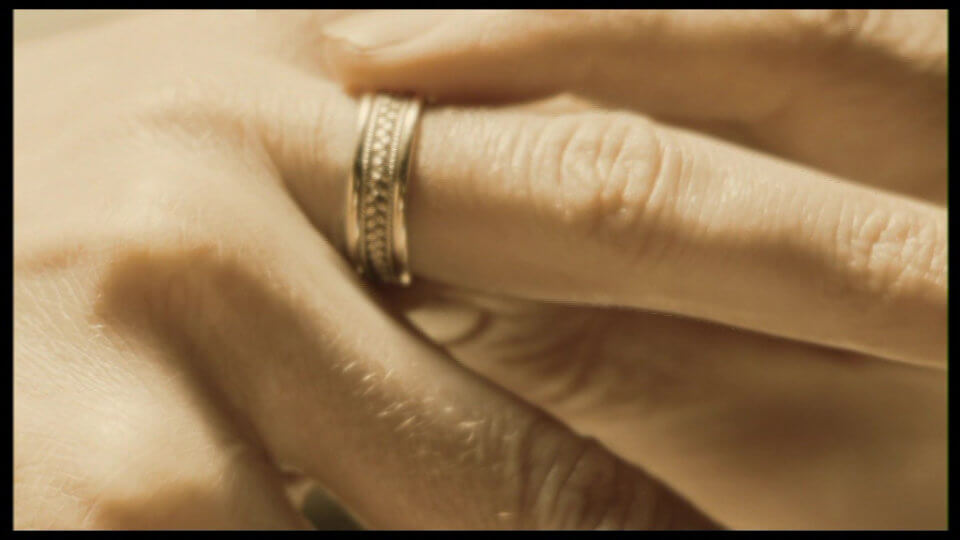
One thing that bothered me from the beginning was the focus on the wedding ring.
Present-day Tom takes off the ring before surgery. When he goes to pick it up, it’s gone and he never finds it again.
He beats himself up because he lost his ring, until he decides to tattoo one with ink after Izzi’s death.
The ring has also a pivotal role in both the past and the future.
In the past, Queen Isabel gives a ring to conquistador Tomás. She tells him that the ring is to remind him the promise he had made – to deliver Spain from bondage (i.e., to free Spain from slavery). He shall wear the ring when he finds Eden.
When Tomás finds the Tree of Life, he drinks its sap and sees something that looks strikingly similar to a dying star, just moments before going supernova.
This prompts him to take out the ring and put it on his finger. He mutters the words: “My queen. Now and forever, we shall be together.”. However, before he has the chance to do it, he has a seizure and flowers start growing from within his own body, killing him in the process.
In the future, shortly before Tomás is transformed into flowers, he drops the ring. The cosmonaut then is seen picking up the ring and looking straight at the exploding star. He then sticks the ring on his finger, just before the sun implodes and goes supernova.
So we have a contradiction here. In the past, Tomás fails to wear the ring. In the future, he succeeds.
Here’s how I see this.
The action of putting the ring on the finger is, again, symbolising acceptance of mortality. In the case of the conquistador, his inability to accept his own mortality and thirst for the power that can free Spain and the queen no matter what, leads to his death.
In a way, the conquistador represents the idea of attempting to trick mortality, of never accepting the fact that we will all going to die and there is nothing we can do about it. The death of the conquistador is tantamount to the death of these ideas in present-day Tom.
In contrast, the cosmonaut accepted his fate, his own mortality. He knows that he will die and he is ok with that. Successfully wearing the ring symbolises that acceptance.
The Fountain is one of those films that some love and some hate.
Many critics have harshly critised the movie, stressing the confusing plot, excessive covert messages and abrupt transitions (as of September, 2023, The Fountain has an average rating of 53% in the Tomatometer and a metascore of 51). It will come as no surprise that I strongly disagree with all those negative reviews.
To me, The Fountain is Aronofsky’s most glorious work to date. I loved the storyline, the acting, the visuals, the soundtrack, the emotional content, the bizareness… Everything!
In the film, past, present and future timelines are interwoven, describing the journey of a single man, Tom Creo. It is a painful but crucial journey of learning to accept the inevitability of death.
Izzi, Tom’s wife, takes great pains to make him realise that even though she will die, there is no reason to be afraid. She never explicitly instructs him how to come to terms with death, but presents him with subtle cues in the form of Mayan mythology. Izzi believes this is a journey Tom alone needs to undertake – he needs to “Finish it!”.
The demise of both Conquistador Tomás Verde and cosmonaut Tommy (both characters representing Tom’s mental processes) were a necessary psychological milestone for Tom coming to terms with mortality. “Death as an act of creation” as Izzi so poetically put it.
Perhaps Izzi truly believes in the idea of reincarnation. Maybe she believes there is an actual Xibalba, where her soul will be reborn and, when the time comes, be with Tom, forever.
I prefer to think that all the stories about Mayan Mythology she told were merely symbolic. That the transformation of one’s body into a tree, the birds eating the fruit of the tree containing one’s soul, etc, represent the idea that we are all dust from the same stars, and death is simply another act of creation.
Beautiful!
With the Fountain, I feel that I developed a new appreciation for cinema. Ever since I watched the movie, I cannot help but compare every other film to this masterpiece. Very few works have had the impact that The Fountain had had (there have been some though, which I’ll eventually get to analysing in this website).
And the most astonishing fact is that this film was the (severely) abridged version of a much larger production that the team had planned, which, sadly, never saw the light of day.
I can only wonder with awe the brilliance the larger movie would have been… I guess it will remain in the realm of imagination for all eternity.
But I’m ok with that 🙂
See you in the next article!
Thank you so much. Such an underappreciate film. History will look kindly on it as people start to realize.
Hi rigel,
Thank you for your comment!
I completely agree with you. I find it appalling that the film received so many negative reviews – just take a look at the aggregated scores on metacritic and rottentomatoes: 51 and 52% respectively (!).
Anyway, I feel comfort knowing that I’m not alone in appreciating this work of art 😀
Thanks!